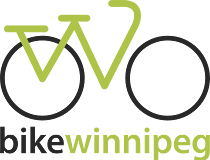Website: bowmanforwinnipeg.ca
Email: info@bowmanforwinnipeg.ca
Facebook: facebook.com/MayorBrianBowman
Twitter: @Mayor_Bowman
No specific statements or platform, as of October 10, 2018, concerning cycling and active transportation appear on the candidate’s website.
Q7: Will you direct the Public Works Department to create a package of walking and cycling infrastructure priority projects worth more than $100 Million dollars and put it as a top priority for the next round of funding from the Investing in Canada Plan? Yes/No
Q9: Will you commit to completing the downtown protected bike lane network in your next term? Yes
Q10: Will you support full funding of the Active Transportation Network – Winter Maintenance Strategy, passed by council on June 21st, 2018, in the 2019 Budget? Yes
Q13: Would you support implementing a policy for the City of Winnipeg, similar to what has been implemented in Vancouver, that prioritizes walking, cycling, public transit and shared-vehicles over single occupant vehicles? No
From Vote Winnipeg 2018 (Winnipeg Free Press) accessed 2 Oct 2018:
Q: “What is your position on reopening Portage and Main to pedestrians?” “Portage and Main is more than just an intersection, it connects us all as a city. It is a place where Winnipeggers come to celebrate and it is an iconic feature of our great city.
Over 17,000 people call downtown Winnipeg home and that number keeps increasing every year, a fact reflected in Artis REIT’s decision to build what will be Winnipeg’s tallest building, a 40-storey mixed-use residential tower at 300 Main Street in the heart of our downtown just south of Portage and Main.
We have all heard from the property owners and businesses downtown that opening of Portage and Main is something they support if planned properly. Some property owners have committed to even more investment if the streets become more activated with pedestrian traffic, which is what opening Portage and Main can do. More investment by property owners and businesses in our downtown will increase the city tax base and help manage against increases to property taxpayers outside of the downtown. I will continue to support the opening of Portage and Main to pedestrian traffic as one of many measures that will make our downtown a more accessible and connected place to be that will help grow the city’s economy and tax base. However, I understand that this is a polarizing issue for many Winnipeggers. That is why I support putting this matter to a vote on the municipal ballot in October, and I am committed to honour the results of it.
Building and positioning a city for a population of a million people strong requires a vision and a plan that is about more than just an intersection, and allowing residents to have a direct say on this one specific city building effort while also being able to choose an overall vision for a city that is growing every year is important for a growing city like Winnipeg.”
Q: “What should Winnipeg’s plan be for the future of public and active transit?” “We have consistently supported annual increases in the tax-supported subsidy to Transit ($66.4 million in 2018 compared to $55.1 million in 2017) despite provincial operating funding being frozen and despite the Province unilaterally eliminating the 50/50 funding agreement, which created a $10 million shortfall in the Winnipeg Transit operating budget. And despite operating costs increasing each year, we have managed to keep transit fares amongst the lowest compared to other major Canadian cities.
I also recently supported a motion directing the Public Service to present options and recommendations on a new low income bus pass program for consideration in the 2019 Budget. Moreover, I will be committing to exploring more initiatives that improve the Transit experience, including the adoption of high frequency bus networks, a larger deployment of electric buses and expanding BRT. However, expansion of our BRT network requires strong funding partnerships with both our provincial and federal governments and I will continue to call on both the provincial and federal governments to continue to support this vital City asset.
The City is currently undertaking a system-wide operational review of transit that will assess opportunities to improve the service in the future. I will continue to support Transit services and work to modernize the system, and I will continue to call on the Province to collaborate with the City of Winnipeg to bring Transit to the next level.
With respect to active transportation, we’ve invested a record $40.6 million over the last four years in all infrastructure related to pedestrian and cycling activity in support of our award winning strategy, and have continued investments planned in the long-term capital budget.”
From 11 Oct 2018 mayoral debate on CBC. Yes or No only response
Q1: “Should we put put bike infrastructure on the back burner in our car city?” No
Q2: “After completing construction that has already started on the Southwest Transitway, should we scrap the rest of rapid transit?” No
The candidate did not complete the 2018 all-candidate environmental survey: A coalition of Winnipeg Environmental Organizations compiled questions for an all-candidate (Mayoral and Councilor) survey with questions relating to the environment, including AT.
